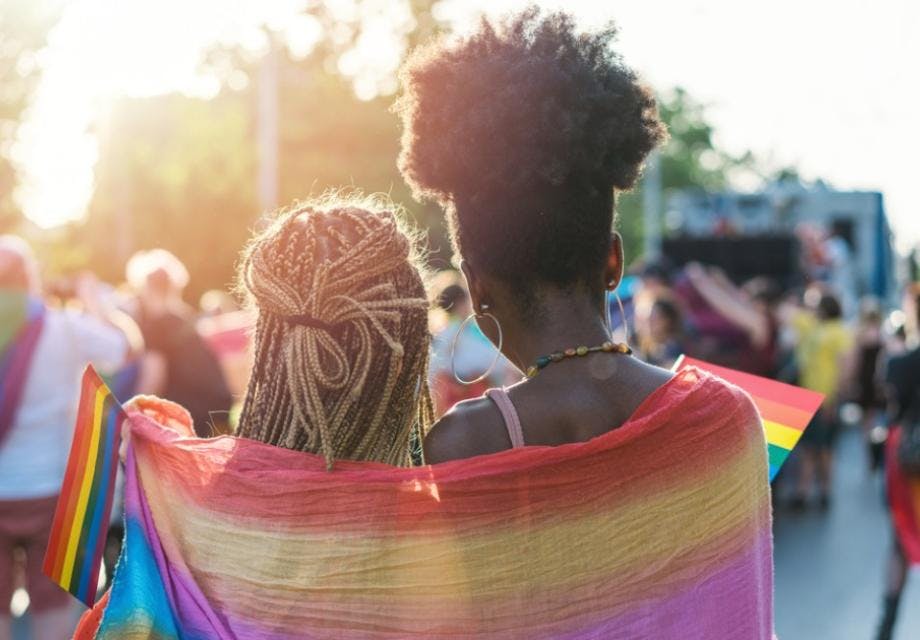How society-level stigma affects LGBT+ people’s health
Hester Phillips
08 March 2024
New evidence review highlights the links between the ‘structural stigma’ LGBT+ people experience and poor mental and physical health outcomes
A major new evidence review has looked at the way homophobic and discriminatory social conditions, cultural norms, laws and policies affect LGBT+ people’s mental health and their HIV and STIs risks.
What is the research about?
The research looked at whether ‘structural stigma’ damages LGBT+ people’s health. Structural stigma refers to the social conditions, cultural norms, laws and policies that damage LGBT+ people’s opportunities, resources and well-being because they are homophobic or discriminatory.
Researchers reviewed evidence from 98 studies that examined this issue. Around 80% of studies were done in the USA. The rest were done in Australia, Canada, Italy, the Netherlands, New Zealand, Russia, Sweden and Taiwan. A handful of studies were done across multiple countries in Africa, Asia, Europe and the UK.
Why is this research important?
LGBT+ people are at increased risk of poor mental and physical health compared to heterosexual, cisgender people. Stigma is one the main reasons for this. But stigma research tends to focus on individual experiences. There is less evidence on how structural stigma affects LGBT+ people’s health.
What did they find out?
There is “generally consistent evidence” that structural stigma increases the risk of poor health among LGBT+ people.
Half the studies found that in places where structural stigma is high (compared to places with lower structural stigma), LGBT+ people are more likely to experience discrimination, victimisation (including hate crimes), harassment, threats of violence and bullying. They are also likely to experience higher levels of self-stigma, worries about being stigmatised and safety fears. And they are more likely to conceal their sexual and gender identities. All of these things increase the risk of poor health among LGBT+ people.
Another set of studies (one fifth of studies reviewed) found that the risk factors that cause poor health were higher among LGBT+ people in places with high structural stigma. These risk factors are biological (such as having a compromised stress response system), psychological (such as not feeling a sense of belonging and having low self-worth) and social (such as feeling socially isolated).
One quarter of studies (26%) found that structural stigma affects how LGBT+ people relate to health service. It lowers healthcare access and causes LGBT+ people to avoid services. It also makes LGBT+ people more likely to expect and experience mistreatment in healthcare settings.
Just under a third of studies (28%) found a link between structural stigma and substance misuse, mainly alcohol misuse. Only three studies examied drug use problems.
Studies on HIV or STIs and stigma fell into two categories. Some studies looked at structural stigma in relation to increasing sexual risk taking, like having sex without a condom. Other studies looked at stigma in relation to things like increased HIV prevalence and AIDS-related deaths.
One fifth of studies found a link between structural stigma and depression. But other mental health issues were less likely to be examined. Only three studies looked at post-traumatic stress disorder, for example.
One fifth (19%) of studies looked at the link between structural stigma and external factors that can affect health, like reduced earnings or relationship difficulties. These things can directly and indirectly impact LGBT+ people’s health.
What does this mean for HIV services?
Stigma is something that all HIV programmes should consider. It has wide-reaching effects for people most at risk of HIV, including LGBT+ people.
LGBT+ people should be at the heart of any intervention that aims to reduce stigma and increase LGBT+ people’s access to HIV services.
Strategies include increasing education about HIV, especially the ways HIV is passed on and the things that everyone can do to prevent HIV from being transmitted. This can reduce people’s fears about HIV and the stigma surrounding groups associated with it.
It is also essential to support LGBT+-led advocacy to change the laws that criminalise same-sex activities and different gender identities. There is also a need to push for legal protections against discrimination so that LGBT+ people can live, work and access healthcare and education like other people.
Public campaigns led by LGBT+ people to challenge homophobic attitudes can also help to reduce social stigma. Sensitisation sessions with healthcare workers and other influential figures such as religious and community leaders can improve the way LGBT+ people are treated within communities.
It is also good to think honestly about your own attitude to LGBT+ people. The first step is to recognise any stigmatising views you may have, then you can challenge yourself to think differently.
Get our news and blogs by email
Keep up-to-date with all our latest news stories and blogs by signing up to the Be in the KNOW news digest.
